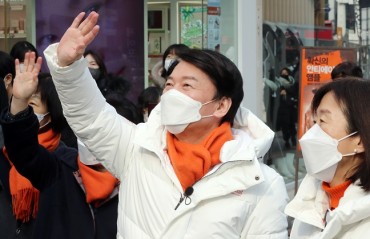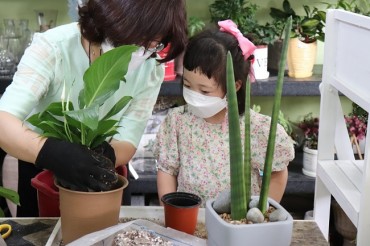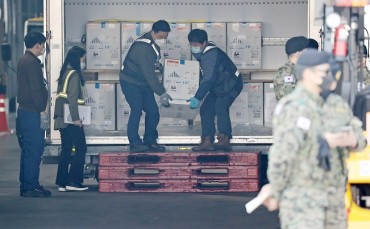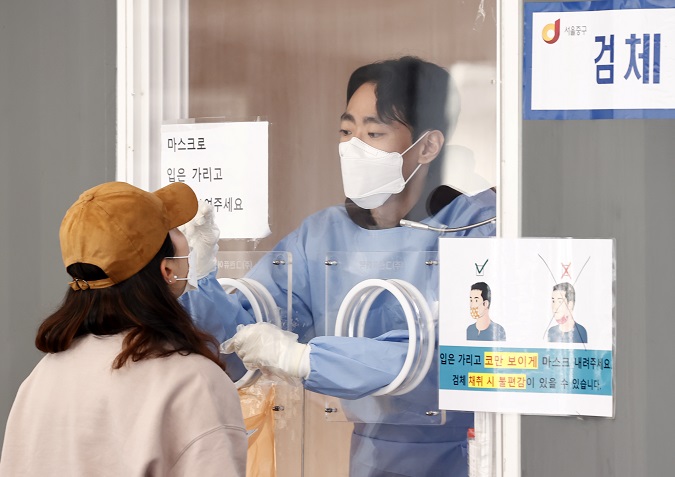
A medical staff member collects specimens from a person for COVID-19 testing at a temporary screening station in front of Seoul Station on Nov. 19, 2021. (Yonhap)
SEOUL, Nov. 20 (Korea Bizwire) — South Korea’s new coronavirus cases stayed above 3,000 for the fourth consecutive day Saturday, raising concerns over a virus resurgence ahead of the winter months and the full-fledged reopening of schools.
The country reported 3,212 new COVID-19 cases, including 3,194 local infections, raising the total caseload to 412,311, according to the Korea Disease Control and Prevention Agency (KDCA).
Saturday’s caseload was up 178 from the previous day and marks the third-largest tally since the pandemic began.
Daily cases have stayed in the quadruple digits since July 7 amid growing cluster infections and the spread of more transmissible variant cases.
The country added 29 more deaths from COVID-19, bringing the death toll to 3,244. The fatality rate stood at 0.79 percent.
The number of critically-ill patients reached 508, surpassing the threshold for the first time in two days.
As of 9 p.m. Saturday, health authorities and local governments reported 2,219 new cases, down 677 from the same time previous day.
The decrease appears to be attributable to fewer tests. The tally excludes cases from the southeastern port city of Busan that has stopped releasing real-time data.
Daily infections have not shown signs of slowing down in recent weeks, as the government began easing antivirus restrictions on Nov. 1 for a gradual return to pre-pandemic life under the three-phase “living with COVID-19″ scheme.
South Korea planned to move to the second stage in mid-December after a two-week evaluation period, but health authorities have warned the country may not be able to do so if the current trend continues.
The virus resurgence has spawned concerns in the winter season, especially ahead of a full opening of in-person classes at schools next week.
It is adding to health authorities’ woes amid a growing shortage of hospital beds reserved for seriously ill patients.
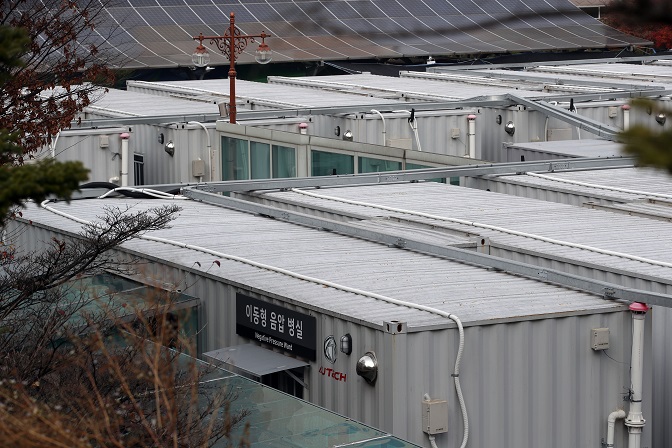
This photo, taken Nov. 19, 2021, shows make-shift negative pressure rooms installed in a parking lot of a Seoul hospital in the northwestern Seoul. (Yonhap)
The number of patients waiting to be admitted to hospitals in the greater Seoul area shot up to 659, up from 520 a day earlier, according to the health ministry.
There were none on the waiting list around Nov. 1, when the country began relaxing monthslong strict antivirus restrictions, but the figure has since grown at a fast pace.
The bed occupancy rate in intensive care units for COVID-19 patients had stood at 80.3 percent in Seoul and 78.3 percent in the greater Seoul region as of Friday. The figure for the country as a whole came to 64.8 percent.
The health authorities earlier said 75 percent of bed occupancy is a critical threshold.
Of the locally transmitted cases, Seoul added 1,372 new cases, while the surrounding province of Gyeonggi and the western port city of Incheon reported 988 and 204 patients, respectively.
Combined, the wider Seoul area accounted for 80.3 percent of the country’s total cases.
A total of 42.2 million people, or 82.2 percent of the country’s population, have received their first shots of COVID-19 vaccines, and 40.45 million people, or 78.8 percent, have been fully vaccinated, the KDCA said.
The government has also been working to administer booster shots to senior citizens and other vulnerable groups, as breakthrough infections among fully vaccinated people have grown due to the waning vaccine effectiveness.
More than 150,000 vaccinated people received their booster shots Friday, raising the total number to 1.76 million, the agency said.
Among the total, those who were inoculated with the single-dose of Johnson & Johnson’s Janssen COVID-19 vaccines accounted for 560,372.
(Yonhap)



